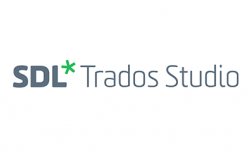Translator and Localizator
Translation is the process of converting written or spoken content from one language into another, while localization is the process of adapting that content to a specific cultural and linguistic context. In other words, translation is focused on linguistic accuracy, while localization is focused on cultural and linguistic relevance.
The goal of translation is to accurately convey the meaning of the original content in the target language, while preserving the tone and style of the original. This involves not only translating the words themselves, but also understanding the cultural nuances and connotations of the source language, and finding equivalent expressions and phrasing in the target language.
Localization takes this a step further by adapting the translated content to the target audience’s cultural and linguistic norms. This may involve changes to language, imagery, colors, and other design elements to ensure that the content resonates with the target audience and doesn’t offend cultural sensibilities. For example, a product slogan that works well in English may need to be changed for a different cultural context, to avoid unintended negative associations.
Localization can also involve adapting content to different geographic regions within the same language. For example, British English and American English have different spellings, idioms, and cultural references that can affect the interpretation of the content. A skilled localization team can identify these differences and make appropriate adaptations to ensure that the content is effective and appropriate for each target market.
Both translation and localization require a deep understanding of both the source and target languages and cultures, as well as a keen attention to detail and cultural sensitivity. Professional translators and localization specialists use specialized tools and software to aid in the process and ensure accuracy and consistency.
In today’s globalized world, translation and localization are essential for businesses that operate in multiple markets and languages. Effective translation and localization can help businesses connect with customers, increase their reach, and build brand recognition in new markets.
What are the benefits of outsourcing Translators and Localizators?
Outsourcing Translators and localizators can offer several benefits, including:

Cost Savings
Outsourcing graphic design can be more cost-effective than hiring an in-house designer. With outsourcing, you can choose a provider with competitive pricing and avoid the overhead costs associated with hiring an employee.

Access to skilled expertise
Outsourcing gives you access to specialized expertise and a broader range of skills. You can choose a provider with the specific expertise you need, whether it’s in branding, logo design, web design, or other areas of graphic design.

Increased flexibility
Outsourcing allows you to scale your graphic design needs up or down depending on your business needs. You can work with a provider on a project-by-project basis or establish a long-term relationship for ongoing support.

Improved efficiency
Outsourcing graphic design can free up your in-house team to focus on other areas of your business. This can lead to improved efficiency and productivity, as your team can focus on core competencies rather than trying to juggle multiple tasks.

Faster turnaround times
With an outsourcing provider, you can benefit from faster turnaround times. Providers can often work on projects around the clock, so you can get your projects completed more quickly.
Overall, outsourcing graphic design can provide significant benefits to your business, including cost savings, specialized expertise, increased flexibility, improved efficiency, and faster turnaround times.
What qualifications, skills and experience make a successful Translator and Localizator Professional?
To be a successful translation and localization professional, one should have the following qualifications, skills, and experience:
Qualifications:
- A bachelor’s degree in translation, linguistics, or a related field
- Certification from a recognized translation association
Skills:
- Excellent command of at least two languages (source and target)
- Strong writing and editing skills in both languages
- Familiarity with translation software and tools
- Attention to detail and accuracy
- Ability to work under tight deadlines
- Cultural sensitivity and awareness
- Excellent communication skills
Experience:
- Experience in translation and localization of various types of documents, such as legal, medical, technical, and marketing materials
- Experience in working with different file formats, such as Microsoft Office, Adobe, and HTML
- Familiarity with project management and coordination
- Experience in working with clients from different cultures and backgrounds
Overall, a successful translation and localization professional should possess a combination of education, skills, and experience that allows them to provide high-quality, accurate, and culturally sensitive translation services to clients.
What tools and systems do Translator and Localizator Professionals need to be successful in their roles?
Translation and localization professionals rely on various tools and systems to be successful in their roles, including:
- Computer-Assisted Translation (CAT) tools: These tools are used to speed up the translation process by storing previously translated sentences and words, creating translation memories, and suggesting translations for new sentences.
- Machine Translation (MT) tools: These tools use artificial intelligence to translate text automatically, but they are not always accurate and require a human translator to review the translations.
- Terminology management systems: These systems allow translation professionals to manage and maintain terminology and create glossaries to ensure consistency across translations.
- Project management tools: These tools are used to track project progress, manage timelines, and coordinate translation projects involving multiple translators, editors, and proofreaders.
- Localization management systems: These systems are used to manage the localization of software, websites, and other digital content. They allow localization professionals to manage translation workflows, collaborate with developers, and test localized content.
- Quality assurance tools: These tools are used to check the accuracy, consistency, and quality of translated content, including grammar and spelling checkers, style guides, and quality control checklists.
- Communication tools: These tools are used to facilitate communication between translation professionals and clients, including email, instant messaging, video conferencing, and project management platforms.
Overall, the use of these tools and systems helps translation and localization professionals improve efficiency, quality, and consistency in their work.





